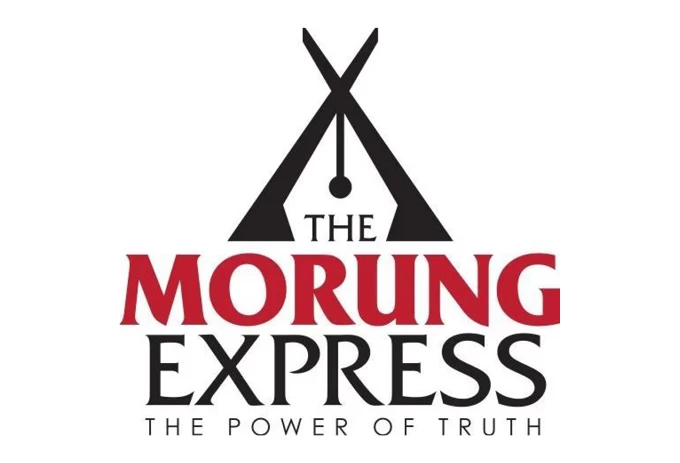
Dr John Mohan Razu
‘Resurrection’ of Jesus stands as the foundation of the Christian faith, life and living. Without the belief and base in resurrection, there is no Christianity. Christianity per se hangs superbly and tightly on the credo of resurrection. As against the backdrop, we are once again going to observe Easter Sunday that marks symbolically the resurrection of Jesus Christ after having observed 40-days of lent. Biblical narratives on the death and resurrection of Jesus interpret in different ways. John 11: 25-26 Jesus told her “I am the resurrection and the life. Anyone who believes in me will live, even after dying. Everyone who believes in me will never ever die …” It means Jesus overcame death. We are assured of everlasting life.
The basic message of resurrection narrative is that Jesus Christ broke the shackles of death. Jesus Christ by doing this has totally sealed the very understanding of death which is not the end of life, but a continuum of life—a revolutionary breakthrough. For example, in John 12: 23-26, Jesus answered: “The hour has come that the Son should be glorified … Unless a grain of wheat falls into the ground and dies, it remains along; but it does, it produces much grain. He who loves his life will lose it, as he who hates his life in this world will keep it for eternal life …” It is so enlivening, assuring, and promising. Likewise, in Mark 16: 5-7 we read “And entering the tomb, they a young man sitting on the right side, dressed in white robe … he said to them, “Do not be alarmed. You seek Jesus of Nazareth, who was crucified. He has risen …”
Yes, Jesus is risen, and lives. The resurrection narrative is sweeping right across the world and among Christians reverberating, rekindling, and reposing that we have the Redeemer and Saviour of the world who lives and is being present amongst us always. This is indeed the most powerful message that keeps ringing and thus handed over to generations for the last 21 centuries. Jesus is risen and there’s no iota of doubt that He is risen lives amongst us, in us and why and who should we be afraid of. The crux of the Jesus’ Resurrection is that we should never be afraid of death because Jesus Christ broke the chains/shackles of death by overcoming it victoriously. It proves and establishes a fact and the truth that Jesus overcame death and faced it boldly, defeated death and as prophesied He is risen.
In tune to what I have dealt in the previous paragraphs, a powerful imagery that I find so intense, captivating, and close to it is ‘The Valley of Dry Bones narrated in the book of Ezekiel 37: 1-28 is indeed is one of the most nuanced metaphors that covers multiple tangents. God took Ezekiel to a valley. In this vision he saw the white bones of an army killed in battle. They were scattered across the valley and made white by the sun. God instructed the prophet to speak to these lifeless bones. When God did this there was a noise and the bones came together. As he looked flesh came on the bones and skin covered them, but there was no breath in them.
At God’s command, Ezekiel called on the four winds to breathe into the dead bodies they might become alive. In his vision, he did this and the dead men came to life before his eyes. This has faith-based spiritual and historical connotation. In Babylon the sons of Israel felt like dry bones. They lost their hopes. Their spirit felt dead. God had to awaken them to new life before they could be one people again and return to their own land. This may be a picture of Israel and Judah coming together again as one nation. The context we live in is almost the similar to that.
As against this, the biblical vision exposits a picture of hope and a great promise. It means that the victims and those who have been subjugated and oppressed around the world shall come back to life with renewed vigour and spirit. The wind blows with force from all the directions and the silenced and exploited people rise up like a mass or huge force from four different corners of the world with renewed rigor and strength to those who have been living in the bondage of occupation, domination, and oppression.
Biblical categories of life and resurrection are grounded on a redemptive activity of God. God of life and resurrection of Jesus Christ from the grave identifies with the life-affirming forces by dismantling the forces of evil. A framework of God of Life and Resurrection revolves around moral agency and closer relationship with the indwelling God who is alive, risen and present. Resurrection narrative is premised on moral agency that navigates our life in all fullness thus pushing forward the flourishing of creation and thus resists and defeats all kinds of demons that render death and destruction – flows from embodied communion in which God incarnate is received and given.
The power of the Spirit that raises the dry bones into life with flesh and blood instills courage and resilience spread like wild fire into all directions countering, subverting, and destroying the evil by establishing new heaven and new earth here and now. The force that is unstoppable flows from the indwelling spirit of the resurrected Christ, which is a historical continuum that sustains and revitalizes power for countering and resisting the forces of domination and exploitation. Resurrection narrative is grounded on promises and presence of the Spirit of God that instils life in all fullness to all those who believe Christ is risen and lives amongst us. As we observe and celebrate Easter, let us rejoice that we have the risen Lord who dismantled death and in the process, assured life so that we may have fullness of life.



